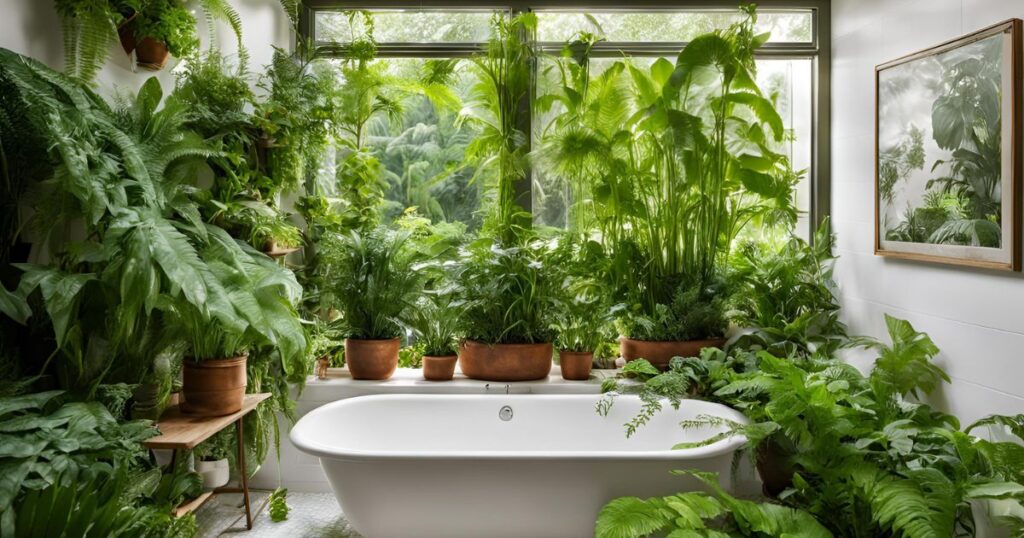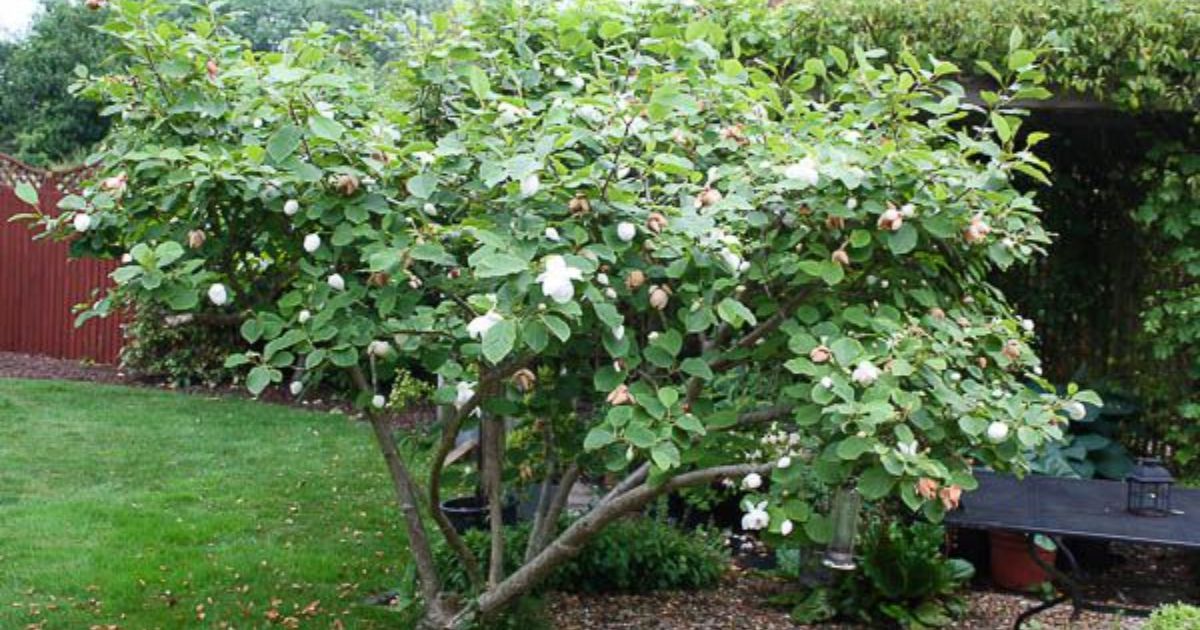Bathrooms are often seen as utilitarian spaces, but they can become serene, spa-like retreats with the right touches. One of the easiest ways to enhance your bathroom is by introducing plants that beautify the space and provide numerous health benefits. The right greenery can transform your bathroom into a calming oasis, purifying the air, increasing humidity, and boosting your overall mood. But with the unique environment of a bathroom—high humidity and often low light—it’s essential to choose plants that thrive in these conditions.
In this guide to The Best Plants for a Bathroom: Enhance Your Space with Nature’s Beauty, we’ll explore the top plant varieties that flourish in bathroom environments. Whether you’re looking for a low-maintenance air purifier or a vibrant addition to your countertop, these bathroom-friendly plants will help you create a relaxing atmosphere while improving the air quality and aesthetics of your space.
Why Add Plants to Your Bathroom?
Adding plants to your bathroom offers a wide range of benefits that enhance the space’s look and feel. Here’s why plants are a perfect addition to your bathroom:
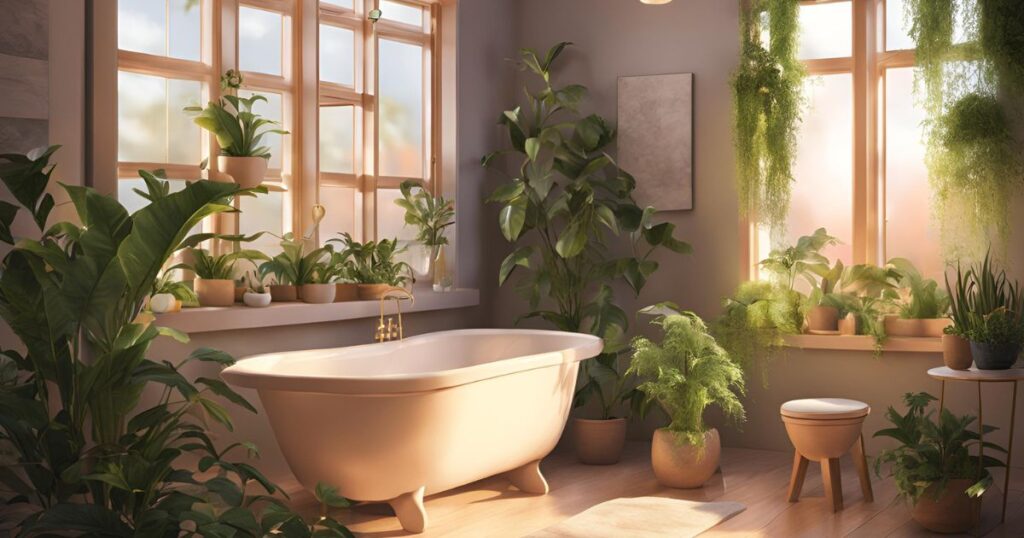
1. Air Purification
Plants naturally filter the air, removing toxins and improving air quality. Certain plants, such as the peace lily, snake, and spider, are highly effective at absorbing common indoor plants for bathroom pollutants like formaldehyde, benzene, and ammonia. These toxins are typically found in household products such as cleaning agents, shampoos, and even some types of paint. By absorbing these harmful substances and releasing oxygen, natural air filters like plants make the air healthier and fresher bathroom environment.
2. Humid Environment
Bathrooms are naturally humid due to the steam from hot showers or baths. This high humidity level creates the perfect conditions for plants that thrive in moist settings. Species like ferns, orchids, and pothos are particularly suited for bathrooms as they flourish in moisture-rich environments. These plants thrive in the humidity and can assist in keeping the air’s moisture balance in a healthy range, preventing the bathroom from becoming too dry, especially in cooler seasons. This makes plants an ideal, low-maintenance solution to enhance the bathroom’s atmosphere.
3. Aesthetic Appeal
Plants may immediately improve the visual appeal of your bathroom by adding a touch of nature, beauty, and vibrancy. The natural greenery introduces color and texture that softens a bathroom’s clean, often sterile look. Whether placed on the windowsill, hanging from the ceiling, or arranged on shelves, plants bring life and warmth into the space, transforming it from a functional room into a peaceful, spa-like retreat. The gentle addition of plants creates a serene environment that invites relaxation and calm, making your bathroom feel like a sanctuary. How to Grow Forget-Me-Not
4. Mental Health Benefits
Plants contribute significantly to mental health by creating a calming ambiance and promoting relaxation. Studies have shown that having plants around can reduce stress levels, improve concentration, and enhance overall well-being. The presence of greenery in your bathroom brings a sense of tranquility and helps reduce anxiety, fostering a peaceful atmosphere. Taking time to care for plants can also provide therapeutic benefits, offering moments of mindfulness and connection with nature. As you relax in your bathroom, surrounded by soothing plants, you’ll experience an enhanced sense of calm, improving both your mood and mental wellness.
Incorporating plants into your bathroom is a simple yet powerful way to enhance its functionality and beauty. From purifying the air to boosting your mood, there are many advantages to plants that create your bathroom a more pleasant and revitalizing place.
Factors to Consider When Choosing Bathroom Plants
When selecting plants for your bathroom, several important elements must be taken into account to guarantee their success in the unique environment. These factors will help you choose the best plants for bathroom for your space, making the process easier and more rewarding.
1. Lighting Conditions
Most bathrooms, especially those without large windows or adequate natural light, often face lighting challenges. When choosing plants for your bathroom, selecting species that can thrive in low light is crucial. Plants such as the snake, pothos, and ZZ plants are excellent options for bathrooms with limited sunlight. These plants can tolerate low-light conditions and still grow healthily. If your bathroom has more natural light, you can opt for slightly more light-demanding plants like peace lilies or orchids. Think about the amount of natural light that enters your bathroom when choosing the plants that will grow best in that setting.
2. Humidity
The humidity levels in bathrooms can be high because of vapor from heated baths and showers. This moisture is a significant bonus for many moisture-loving plants that thrive in humid environments. Plants like ferns, orchids, and bamboo are perfect for such spaces because they naturally enjoy high humidity. Not only will they thrive in the bathroom’s moist atmosphere, Why Fall is the Best Time to Plant Trees but they will also help maintain a balanced moisture level in the air, improving your bathroom’s overall air quality. If your bathroom experiences fluctuating humidity levels look for adaptable plants that can handle varying moisture conditions.
3. Size of the Bathroom
Your bathroom’s dimensions have a big impact on selecting the right plants. For smaller bathrooms, compact plants are often the best choice. Small plants like succulents, air plants, or mini ferns fit easily on windowsills, shelves, or countertops without overwhelming the space. For larger bathrooms, you can incorporate bigger plants, such as a rubber plant or a tall palm tree, to create a more dramatic effect and fill the space. Be mindful of the scale of your bathroom when selecting plants, as the wrong size can make the space feel crowded or unbalanced.
4. Maintenance Needs
Maintenance needs should also be a key factor in your plant selection. Choosing low-maintenance low light bathroom plants is essential if you lead a hectic life or are new to caring for plants. Many good bathroom plants, like the spider, snake, and pothos, require minimal care, making them perfect for beginners. These plants are forgiving and can withstand occasional neglect, such as missed waterings or periods of low light. On the other hand, more delicate plants, like orchids or ferns, may require more specific care and attention to thrive, so they are better suited for experienced plant owners or those willing to invest more time in maintenance.
By considering these factors—lighting conditions, humidity levels, bathroom size, and maintenance needs—you’ll be able to select good plants for bathroom that are well-suited to your space and lifestyle. The appropriate plants will flourish not just in your bathroom but also bring beauty, serenity, and improved air quality to the space. growing asparagus in raised beds
Top 10 Best Plants for a Bathroom
Adding plants to your bathroom enhances the decor and brings numerous benefits, including air purification and increased humidity tolerance. Here’s a list of the top 10 best bathroom plants, each perfect for various bathroom conditions and care levels.
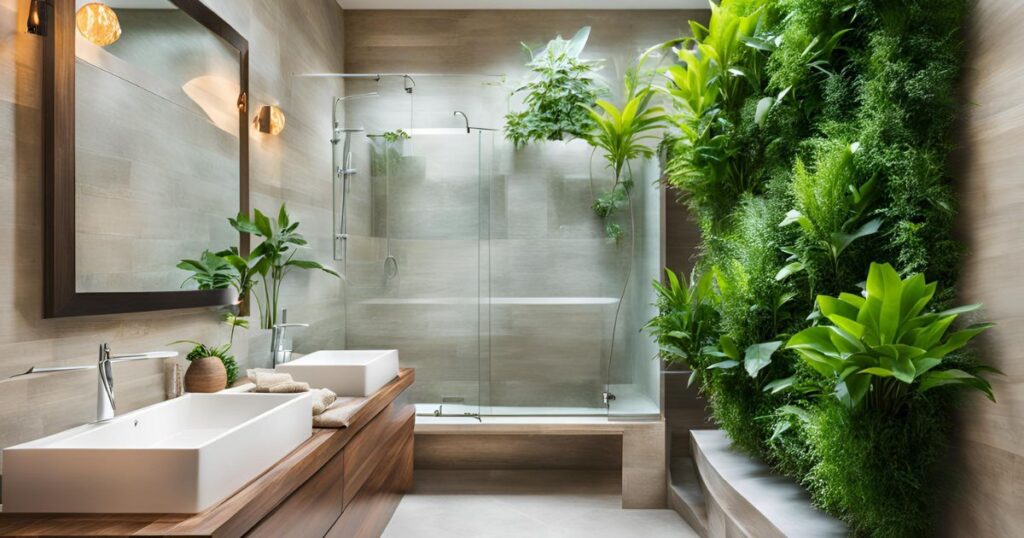
1. Spider Plant (Chlorophytum comosum)
- Benefits: The Spider Plant is an excellent air purifier that removes toxins from the air and produces oxygen. It’s also easy to care for, making it an excellent choice for beginners.
- Care: It thrives in low light and moist conditions, typical in most bathrooms. It requires occasional watering and enjoys a bit of indirect sunlight.
2. Snake Plant (Sansevieria trifasciata)
- Benefits: Snake plants are well known for their ability to filter the air, especially for removing formaldehyde and benzene. It’s an ideal plant for improving air quality.
- Care: These plants thrive in low light and high humidity, perfect for bathroom conditions. They require minimal watering, allowing for a more hands-off approach.
3. Aloe Vera
- Benefits: Aloe vera is well renowned for its capacity to heal, Best Fast Growing Trees for Small Yards particularly in terms of soothing burns and skin irritations. It also purifies the air.
- Care: This plant prefers indirect light and needs occasional watering. It doesn’t like being overwatered, so it’s ideal for bathrooms that may not require constant attention.
4. Peace Lily (Spathiphyllum)
- Benefits: Peace Lilies are famous for their air-purifying abilities, especially for removing toxins like ammonia and benzene. They also produce beautiful white flowers, adding a touch of elegance to your bathroom.
- Care: Peace Lilies tolerate low light and thrive in bathroom humidity. To keep the soil damp but not wet, they require frequent watering.
5. Pothos (Epipremnum aureum)
- Benefits: Pothos is a versatile and low-maintenance plant perfect for hanging baskets. It’s plants good for bathroom an effective air purifier and helps improve the overall atmosphere in your bathroom.
- Care: This plant grows well in low light and thrives in moist environments, making it ideal for bathroom spaces with steam and humidity. Pothos requires occasional watering.
6. English Ivy (Hedera helix)
- Benefits: English Ivy is known for its air-purifying abilities and ability to filter out airborne mold and allergens. Its trailing vines add an elegant touch.
- Care: It prefers a calm, humid environment and indirect light, making it perfect for the bathroom. Regular misting can help it thrive in high humidity.
7. Boston Fern (Nephrolepis exaltata)
- Benefits: Boston fern bathroom are perfect for bathrooms with higher humidity levels. They’re natural air purifiers that help remove harmful substances like formaldehyde.
- Care: These ferns thrive in humid, low-light conditions and need consistent moisture to flourish. They also benefit from regular misting, making them ideal for your bathroom environment.
8. Orchids (Phalaenopsis)
- Benefits: Orchids add elegance and a splash of color to your bathroom. Their beautiful flowers are a perfect way to brighten up any space.
- Care: Orchids prefer indirect light and thrive in high humidity, making them perfect for bathrooms. They require regular watering, but the roots should not sit in water, which can cause rot.
9. Bamboo (Dracaena sanderiana)
- Benefits: Bamboo symbolizes luck and resilience. It’s also known for its air-purifying qualities, making it a great bathroom plants addition to any bathroom.
- Care: Bamboo thrives in low light and is very adaptable—it can grow in water or soil. It only needs occasional watering, and it can easily be placed in a container with water for a decorative look.
10. ZZ Plant (Zamioculcas zamiifolia)
- Benefits: The ZZ plant is virtually indestructible and offers air-purifying benefits. It’s one of the easiest houseplants for the bathroom to care for, making it ideal for beginners.
- Care: This plant tolerates low light and doesn’t require much water. It’s a great option for restrooms with little sunlight and irregular watering schedules.
Each plant brings unique qualities to your bathroom, from enhancing the aesthetic to improving the air quality and promoting relaxation. Depending on your bathroom’s lighting, humidity, and space, these 10 plants can thrive and enhance your bathroom experience. when are jerusalem artichokes ready to harvest
How to Care for Bathroom Plants
Caring for bathroom plants requires a slightly different approach than tending to plants in other parts of your home. Due to the unique environment—high humidity, fluctuating temperatures, and often limited sunlight—proper care is essential to ensure your plants thrive. Here are some key tips to keep your indoor plants for washroom healthy and vibrant.
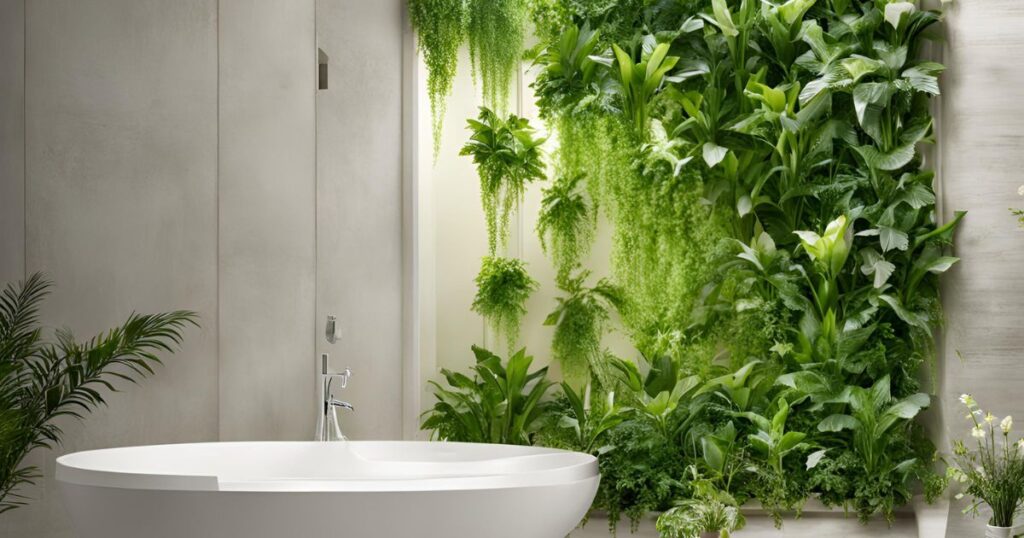
1. Watering
- The high humidity in bathrooms can reduce the need for frequent watering, as plants may absorb moisture from the air.
- However, not all plants have the exact water requirements:
- Low-water plants (e.g., Snake Plant, ZZ Plant, Aloe Vera) only need watering in arid soil.
- Moisture-loving plants (e.g., Boston Fern, Peace Lily, Pothos) should be watered regularly to keep the soil slightly damp.
- It’s time to water if the earth feels dry an inch below the surface. Always examine the soil before watering.
2. Humidity Management
- Bathrooms naturally have high humidity, which benefits plants like Ferns, Orchids, and English Ivy. However, excess moisture can lead to mold or mildew growth.
- If your bathroom gets too humid, improve airflow by:
- Switching on the exhaust fan or opening a window.
- Use a small dehumidifier if necessary.
- For plants that need even more humidity, occasional spritzing or setting a pebble tray with water beneath the pot can help maintain moisture levels.
3. Lighting Needs
- Many bathrooms have limited natural light, so selecting low-light plants like Snake Plants, ZZ Plants, and Pothos is ideal.
- If your bathroom has a bright window, position light-loving plants like Aloe Vera and Orchids near it, but avoid direct harsh sunlight.
- To create artificial light, think about utilizing grow lights for bathrooms with no windows. LED grow lights work well for plants that require moderate to bright light exposure.
4. Cleaning and Maintenance
- Bathroom plants can accumulate dust and residue from humidity, so clean leaves regularly with a damp cloth to keep them healthy and photosynthesizing efficiently.
- Check for mold, mildew, or pests (like fungus gnats) that thrive in damp environments. If you notice mold on the soil, let the plant dry out a little before the next watering.
- To encourage healthy development and stave off disease, trim any dead or yellowing leaves.
By following these simple care tips, your bathroom plants for washroom will survive and thrive, adding beauty, fresh air, and a calming atmosphere to your space. strawberry breeds
Moisture Absorbing Plants for Bathroom
Bathrooms are often humid spaces, making them ideal for certain plants that thrive in moisture and help absorb excess humidity. Choosing the right greenery can improve air quality and add a refreshing touch to your space.
1. Boston Fern
This lush plant loves high humidity and is known for its ability to absorb moisture from the air, making it perfect for steamy bathrooms.Additionally, it eliminates pollutants like formaldehyde from the air.
2. Peace Lily
Peace Lilies are elegant and low-maintenance. Their leaves naturally absorb moisture and help prevent mold growth. Plus, their white blooms add a spa-like feel.
3. Spider Plant
A fan favourite for a reason Spider Plants are tough, adaptable, and love humidity. They’re great for absorbing moisture and purifying the air.
4. English Ivy
This trailing vine thrives in damp conditions, effectively reducing airborne mould and mildew in bathrooms.
5. Aloe Vera
While known for its skin-soothing gel, Aloe Vera absorbs humidity and thrives in bright, steamy environments.
These plants aren’t just pretty—they’re hardworking additions to your bathroom that keep it fresh and healthy.
Conclusion
Incorporating the best plants for a bathroom is an easy and effective way to enhance your space with nature’s beauty. Not only do bathroom plants purify the air, absorb excess moisture, and create a serene atmosphere, but they also bring a refreshing touch of greenery that elevates your décor. Whether you choose a resilient Snake Plant, a trailing Pothos, or a delicate Orchid, a perfect plant suits your bathroom’s lighting and humidity conditions.
You can transform your bathroom into a spa-like retreat filled with lush greenery and fresh air by picking the appropriate plants and giving them the required care. So why not bring a minor nature into your daily routine? With minimal effort, you can enjoy these beautiful best plants for the bathroom calming, aesthetic, and health benefits.
FAQ
1. What are the best plants for a bathroom with no windows?
Plants that thrive in low light are ideal for windowless bathrooms. Some great options include Snake plants good for bathroom, ZZ Plants, Pothos, and Peace Lilies. If needed, you can supplement with grow lights to provide artificial lighting.
2. Do bathroom plants help with humidity control?
Yes! Many plants, such as Boston Fern, English Ivy, and Bamboo, absorb excess moisture from the air, helping to regulate humidity levels and reduce mold and mildew growth.
3. How often should I water my bathroom plants?
The type of plant determines how often to water it humidity levels. Low-water plants like Aloe Vera and Snake Plants only need watering when the soil is arid. Humidity-loving plants like Ferns and Peace Lily when it’s time to water when the top inch of soil feels dry.
4. Can I keep succulents in the bathroom?
Succulents, such as aloe vera and Bamboo, can thrive in a bathroom if there is sufficient light and ventilation. However, excessive humidity may not be ideal for all succulents, as they prefer drier conditions.

